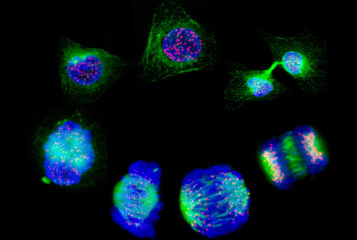Mouse testicle organoids grown in lab
Organoids grown from testicular cells of young mice have shown characteristics of normal mouse testes and have potential to produce sperm...
Egg and sperm cells (also known as gametes) and their precursors.

Organoids grown from testicular cells of young mice have shown characteristics of normal mouse testes and have potential to produce sperm...

The genome of chickens has been edited to make them partially resistant to infection with bird flu...

by Jake Knox
Although sperm cells do contain some mitochondria, scientists have found that these mitochondria do not contain intact mitochondrial DNA...

Russian troops mobilised to fight in Ukraine will be offered sperm freezing and fertility treatment, it has been announced...



The origins of germ cell tumours occurring in pre-pubescent males have been identified by researchers in a new study...


Rat testicle stem cells that were frozen for 23 years and then grafted onto infertile mice, have been shown to produce viable sperm...
BioNews, published by the Progress Educational Trust (PET), provides news and comment on genetics, assisted conception, embryo/stem cell research and related areas.

